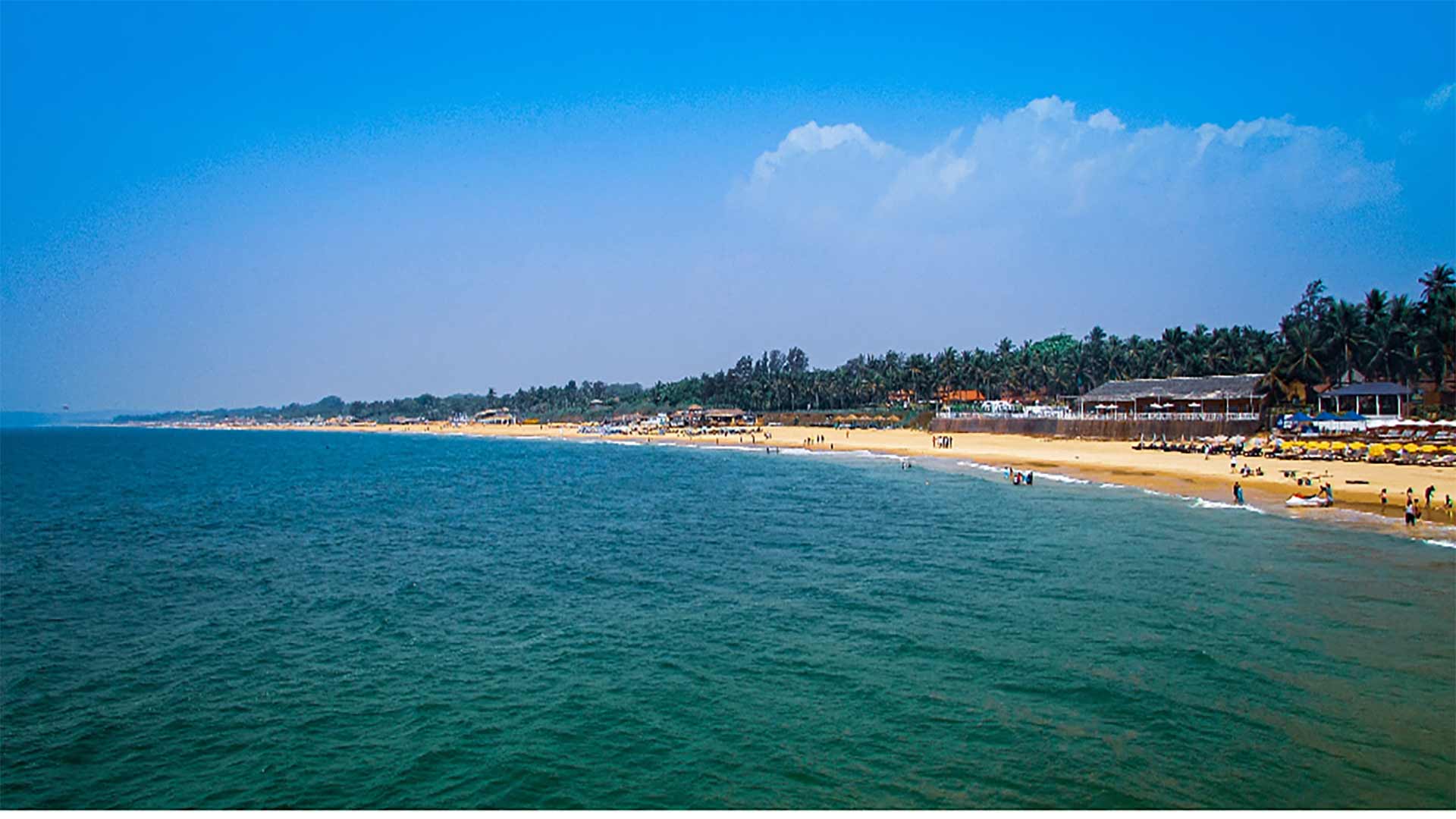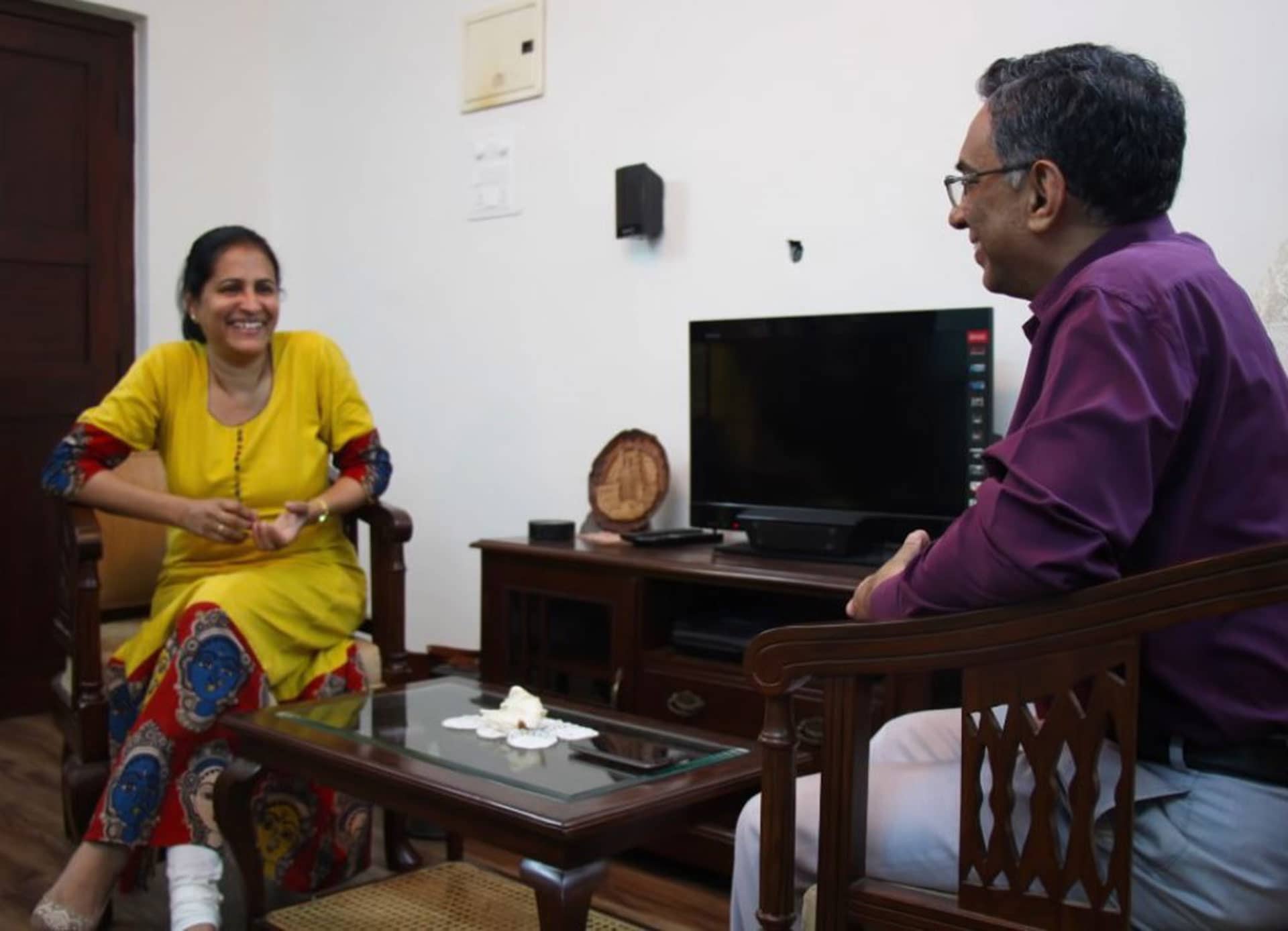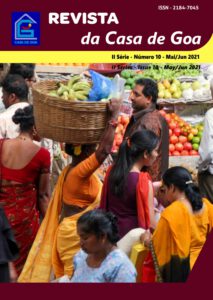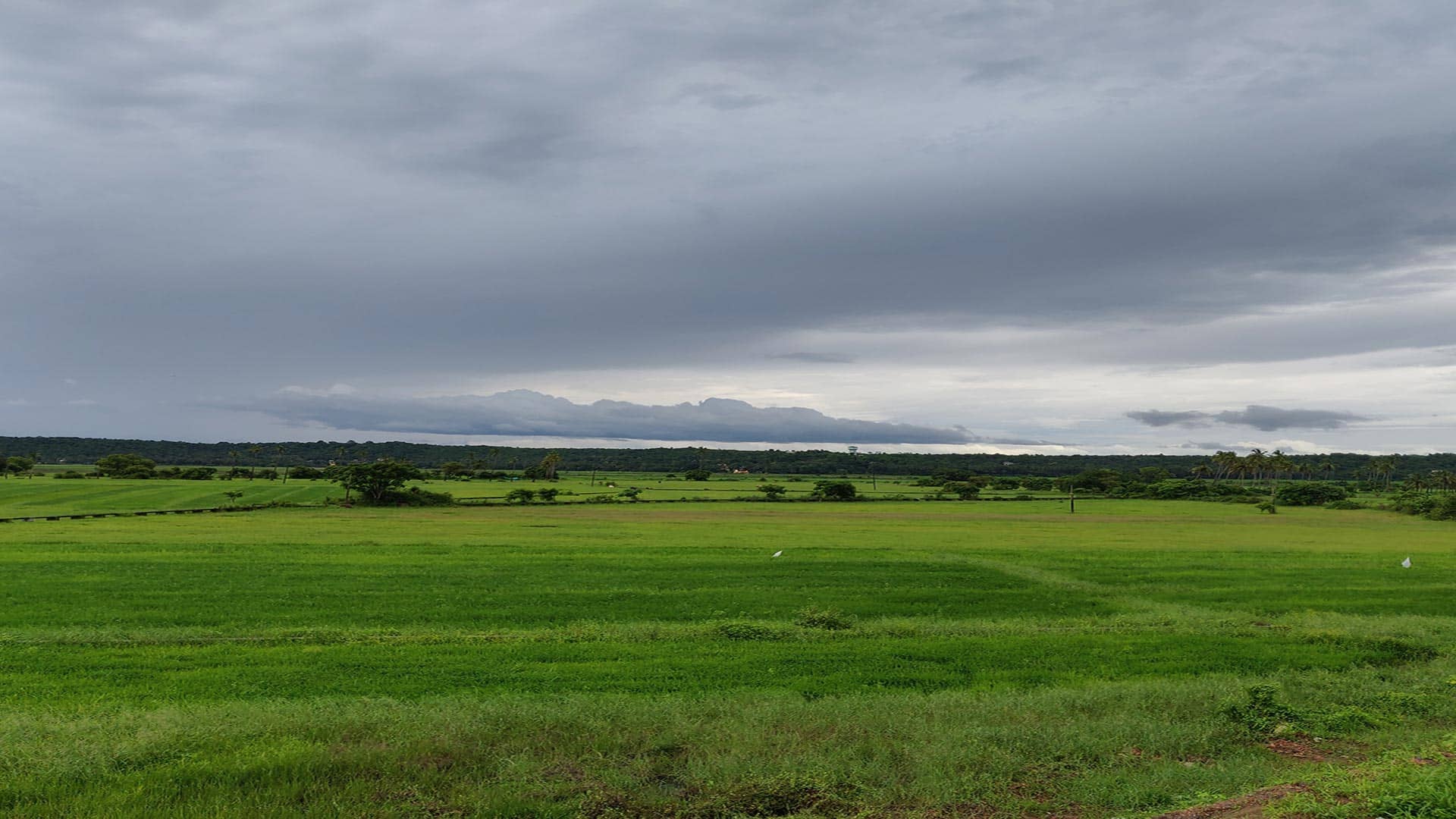Goa without end
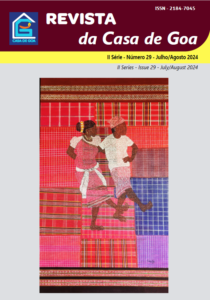 EDITORIAL
EDITORIAL
Goan themes are infinite. This is proven by issue after issue of our magazine, and the current edition, in which we talk about history, politics and religion; languages and the arts; literature and culture; cookery and sport; society and the environment, as well as illustrious Goans. It is all grist to our mill.
Goa is in the public eye, but some aspects of its living have been forgotten, such as the costume on our cover: a kunbi pair dancing (painting by our resident contributor Clarice Vaz). Victims of globalisation, the traditional wearers gave up the dress years ago, and here’s how it the apple of the artist’s eye.
In this vein, Celina de Vieira Velho Almeida, another of our resident contributors, covered various cultural expressions of the Goan people in a series of essays in our magazine. She has put together these and a few others in her recently published book, Feasts and Fests of Goa: Flavour of a Unique Culture, reviewed here by Óscar de Noronha, under the title “Culture between the Covers”. And another work, Becoming Goan, by Michelle Mendonça Bambawale, is the subject of a feature entitled "Of falea, feni and fighting for Goa", by Brian de Souza.
This typical Goan alcoholic drink naturally leads us to our “Wines and Delicacies” section, where we have Goa Curry as a unique dish happily married to Soalheiro, the “matchmakers” being our associate editor José Filipe Monteiro and the eminent food and wine critic Fernando Melo. Be sure to savour this artistic contribution, as well as visit the art section, which features a new artist, Deborah Fernandes; Edgar João, who, far from the land of his ancestors, dreams of coconut trees; Girish Gujar, who paints one of Panjim’s iconic locations; and Rima Dhume, an oyster-shell window with bougainvillea around it.
That’s how we live in Goa!... a theme that inspired Valentino Viegas’ feature article, “A family home in Goa”. Our associate editor says that “with the creation, promotion and development of dynamic family homes, many of the problems that Western society faces in its daily life could be avoided and overcome.” The said author also discusses “How Goa perceived the Carnation Revolution”, an event that marked not only Portugal, but also its former Pearl of the Orient.
In fact, Goa and the Goans have made their mark across the world. In Mário Viegas’ feature, we learn about “António Mascarenhas – an unpretentious star”. And, according to Philomena and Gilbert Lawrence, “Goa’s heart-lung system is alive and well”, thanks to the development of ecotourism. Let’s wish Goan society the same.
Meanwhile, a 19th century understanding of Goan society is found in the novel Jacob e Dulce, which was the subject of a lecture by Luís Cabral de Oliveira, at Casa de Goa. That lecture, as well as the launch of the book A Língua Portuguesa que nos une, by Ivo Álvares Furtado, feature in our News section.
Just as Lusophony unites a long tropical strip, from America to Asia, the Konkani language continues to be the conducting wire of Goan society throughout the world. And when denied citizenship status, Monsignor Sebastião Rodolfo Dalgado restored it through a series titled “Konkani is not a dialect of Marathi”, which we publish in translation by Óscar de Noronha. The latter has also updated the Konkani of J. C. Barreto Miranda’s Enfiada de Anexins Goeses serialised in the Konkani Corner.
In addition to this historical document, on the occasion of the fifth centenary of the birth of Luís de Camões, we publish the essay “Camões, the Poet of the ‘Renaissance’ and the Island of Goa where he lived”, by Renato de Sá, followed the Bengali academic Suniti Kumar Chatterji’s fair assessment of The Lusiads. And the section closes with the story of the imposing statue of the Portuguese Bard, which used to stand in the square of the city of Old Goa.
Pedro Miranda Albuquerque’s “Modesta Epopeia Portuguesa” also comes in very opportunely, taking a new look – critical and original – at the Portuguese epic story in the Orient. It should be noted, however, that without it there would not be Gilberto Freyre’s “sociological miracle” of Goa; there wouldn’t be the literary miscegenation that Júlia Serra talks about in her essay titled “Vimala Devi e a Voz da Saudade”: “the feelings, social inequalities, linguistic and religious diversity and so many other themes that the author captured and brought back from her Goa-India.”
Incidentally, in A Literatura Indo-Portuguesa, Vimala Devi and Manuel de Seabra only cover Goan authors. Their magnum opus does not include Daman, which in fact holds an important dialect of that “Portugal Without End”, as journalist Barata-Feyo put it: a good pretext to publish “Calor”, by Damanese poet Hermenegildo Lopes, who took part in the celebrations for the Day of Portugal, Camões and the Portuguese Communities, which this year took place in Daman, at the happy initiative of the Consulate-General of Portugal in Goa, as you can see from the respective section. And we have a report of the activities of the Goa Delegation of Fundação Oriente, another institution that has been rendering yeoman’s work to Goan society.
Last but not least, we wish to highlight two great contributions to this issue: J.M. John Marshal’s study on the historical evidence of the links between the old City of Goa and the Lateran Archbasilica; and a lucid biography of the last Archbishop-Patriarch of Goa, Dom José Vieira Alvernaz, by Adelino Rodrigues da Costa. This block of two original articles comes in very handy as the 18th Exhibition of the Sacred Relics of St Francis Xavier takes place in less than six months.
Curiously, the Basque missionary who, on his arrival in Goa, in 1542, exclaimed “cosa para ver”, later said “Goa will end by itself”. Without going into the merits of such an enigmatic statement, whether or not apocryphal, we should rather pray that Goa never ends, or rather, that its dynamism endures: a Goa spread across the world, a Goa without end!
Revista da Casa de Goa, No. 29, July-August 2024, pp 1-3 https://rb.gy/mt3jzy
Banner: https://shorturl.at/efkR3
State of Portuguese Language and Culture in Goa
Goa has a ‘very powerful, deep and loving connect’ with its Portuguese past, says Portuguese language teacher Maureen Álvares, in a chat with Óscar de Noronha, on the monthly chat show Renascença Goa.
Use the following link to listen to the original chat in Portuguese on the YouTube channel of Renascença Goa: https://www.youtube.com/watch?v=BRuax1W6O8w
ON: What attracts your students to the Portuguese language?
MA: In fact, when at the very beginning they opt for the Portuguese language, that is, in class VIII, I feel that they do so thinking that it is easier than French or Konkani. Well, initially I used to feel amused to hear these responses: ‘Oh, my grandparents used to speak; I adored listening to that.’ Or, ‘Aunts and uncles that I have in Portugal speak Portuguese. I would like to learn a bit more to be able to communicate better with them.’ This is another way in which students are attracted to opt for this language; and, well, with pride, I can say that Portuguese is a language that presents a stage wider than that of any other language. I do not know if Hindi, Konkani or French have the same variety of programmes, like ‘Vem Cantar’, one of the main ones; Noite de Fado, or the “Skits” that the teachers used to put up; and now many colleges do. St. Xavier’s has done it for some years now and we at Loyola’s have begun and it is now the fourth year in succession that we are going to present this programme.
ON: You mean the “Lusophone Festival of Art and Culture”, don’t you?
M: Yes!
ON: Makes sense... Goa has always been Portuguese-speaking. It really makes sense that they should choose Portuguese, rather than French… How many students do you have each year?
MA: Well, when I began teaching at Loyola, there were 7 students and luckily, the following year the number increased to 18; and we’ve even had 63 students in a division. Now we have a more ‘reasonable’ number. We have 38 students in class VIII. It is only that in class X this year we have 58 students that are appearing for the state board exams, SSC.
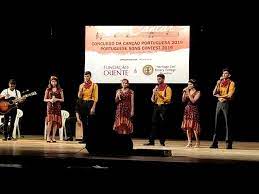
ON: What activities do you have as a part of the curriculum?
MA: Well, we do not have a lot of time for a lot of things, but we have a hall with a stage and the students of class IX put up small plays, a restaurant scene, for instance. And they do it with a lot of enthusiasm: acting as a waiter with a tray, the food, the drinks... It is interesting. And it is in this way that they sense a common factor in languages.
Something very interesting happened when one of my students was answering his exam. I was explaining that Salcete taluka’s spoken Konkani had incorporated many Portuguese words. And when the student could not remember the Portuguese word for spectacles, I said they should close their eyes, think, take a small break…. He immediately remembered the word óculos, and used it!
ON: Do you think that the Portuguese music competitions have also contributed a lot in this regard?
MA: Yes, they have! When I take groups to participate (always more than 2-3 groups) in competitions like ‘Vem Cantar’, for example, it is truly a lot of work. That’s because with so many places where I teach, that is, not only at Loyola’s, but also at Rosary’s, and I also travel to the higher secondary of St. Andrew’s, Vasco da Gama, I do feel tired… perhaps it is the age, I do not know.
ON: Well, that’s a missionary spirit!
MA: Yes!
ON: But the competitions have helped. For example, ‘Vem Cantar’ started more than 14 years ago, I think…
MA: That’s right.
ON: And there are participants who do not know Portuguese…
MA: Yes! As part of a group from Loyola’s, which won the first place, there were only 2 students of Portuguese. Most were students of French.
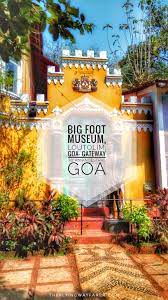
ON: Therefore, it would perhaps be fair to say that it is easier to learn the language through music, wouldn’t it?
MA: It is true, it makes sense. But in a school like Loyola, it is a bit difficult. Imagine, if we were to listen to music, the entire school would stop. Therefore, listening to music during class is not possible.
ON: But the students can do this privately...
MA: They can and should.
ON: Today we have the internet which helps by giving access to all kinds of music from any part of the world. And thus it is easier. And you, Maureen, always take good groups to contests, competitions, or wherever you go...
MA: This is because the students show interest. Frankly, they are the ones who accept the opportunity, accept the effort, and in this effort I get help from my children: my son and daughter train the students to sing. My daughter, in the area of drama, too, and the students and their parents put in efforts, come over to my home, practice… and this happens almost every evening. There are days when we are working till almost 10 at night. I could not have had better help than from the parents of those students….
O: So it is not only your individual or personal effort! It is clearly a collective effort, a family effort… The family is always helping you...
MA: Oh, you mean my family! Yes!
ON: As regards conversation… how does it go? Do you feel that by the time the students reach class XII, they are in a position to hold a conversation in Portuguese?
MA: No! And that’s simply because they are part of a larger group. And when the group is, for instance, on the playground, they either speak English or Konkani. So to attempt conversational skills among them is fine, but most have friends who have opted for French or Konkani.
I’ve also been fortunate to have a South Indian student who spoke Malayalam. When he came to Goa, he had started speaking in Konkani. He won a prize for Konkani in class V. Just imagine, at 10 years of age, he could speak English, Malayalam, Konkani, Hindi which is mandatory; and in class 8 was already learning Portuguese. So I would love to know what student, in Portugal, or France, or any other place in the world, is able to speak five languages fluently at 10 years or even at 12 or 13 years of age! Not possible.
We are a multi-lingual society. It does not enable develop conversational skills.
ON: Yes, in a polyglot society they often use words from several other languages. There are many influences…
MA: But it is like in any other language, like English or Konkani. Now in the group that is going to class IX, we have Muslim and Hindu students. And how does one enable these students to listen to the language? RTP! If not on television, there are RTP programmes on YouTube as well. They can hear the language there too.
But what helped me a lot – and I say this very often, when have teachers’ meetings – is that for students to be able to better connect with the language, they should listen to the Eucharistic service. My suggestion has borne fruit, for it is not the Catholics alone who follow their little missals in English while they listened to a Mass being held in Portuguese…. I found it interesting that the Hindus and the Muslims used to follow the Eucharistic service with greater interest than the Catholics who found it tiresome to attended Mass at church in the morning and later do this exercise at home.
ON: Unfortunately, there are no Portuguese-language newspapers here... but what about your annual school magazine: does it have a Portuguese section?
MA: Students of class X, particularly those of Portuguese, always produce articles like ‘My last year in school’, ‘Goodbye, Loyola!’, etc. – always farewells or memories. But over the years we’ve received good articles…
ON: That’s good… And before we wind up… We’ve spoken about your students, and now, on a personal note, how did you decide to be a teacher of Portuguese?
MA: Well, I never wanted to be a teacher nor did I think I would ever be one. It probably never made sense when I began, because there was a need for a teacher who could teach both French and Portuguese. When a teacher of Portuguese and who also taught French was going on leave, my sister-in-law, who knew the Principal of Loyola’s very well, asked me if I would want to teach. I said I wouldn’t mind….
ON: Congratulations! … And how do you divide your time?
MA: Well, it is difficult but when people do like what they do they do not feel that they are limiting their time to one thing or another. Well, cooking is something I don’t like to do…
ON: What! Not even Portuguese cuisine?!
MA: Neither. But I love to eat. That’s easy, because I have a fantastic family, husband and children who help a lot and are not difficult to please. So it works out.
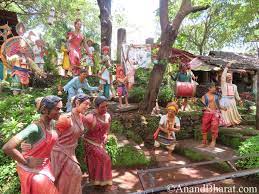
ON: And how about your Museum? You are vital to its working!
MA: The Big Foot, right? Now it is my daughter who does most of the work, but earlier, when we had just begun, I helped my husband. Of course, the material was always in English.
ON: Do you get a lot of Portuguese tourists?
MA: More of Brazilians. We have a huge family in Portugal, so there are always family recommendations and visitors to Goa always drop by.
ON: Did you ever think of translating the name “Big Foot”?
MA: ‘Pé Grande’? No! Frankly the name ‘Big Foot’ was decided upon by the locals, but its real name is “Ancestral Goa”.
ON: ‘Pé Grande’ or, I would say, ‘Pé Gigante’…
MA: ‘Pé Gigante’, yes, it is! Also, at Big Foot we have made a great effort to present to the public what we are: Goans, and proud of being so, because we have had this very powerful, deep and loving connect with our past, when we had the Portuguese here for so many years.
Something interesting happened way back in 2006 when we visited Europe for the first time. We were visiting Aveiro where we went to this pastry shop called “O Peixinho Pequenino”. They wanted my husband and me to try out Ovos Moles. While he was packaging the desserts, he said, “Where are you from?” and my cousins answered, “They are our cousins from India. From Goa. And he said, something very curious and beautiful, “With the Goans we have a connect that comes from the womb of our mothers.”
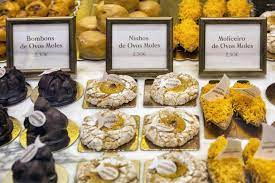
ON: Very beautiful. And may this connect continue to flourish and enrich us.
MA: Both sides.
ON: Right! That’s all for today, Maureen! Your students are always welcome to our studio for more programmes.
MA: Thank you!
ON: Meanwhile, instead of wishing you ‘good luck’, let me say: May your students make giant strides...
MA: Thank you!
Translated from the Portuguese by Maureen Álvares
First published in Revista da Casa de Goa, Série II, N.º 10, Março-Abril 2021
As realidades da nossa identidade
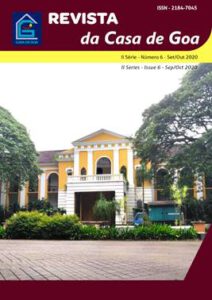
As minhas primeiras palavras são de agradecimento pelo honroso convite que me foi feito de integrar o conselho editorial desta dinâmica Revista, e de saudações aos leitores. Aceitei-o de bom grado por se tratar de um elenco de obreiros culturais com quem doravante poderei colaborar mais estreitamente. E, pela obra feita, os meus parabéns e votos de longa vida à Casa e à sua Direcção.
Para além desses laços que me unem à Revista da Casa de Goa, é a própria terra e cultura de Goa que me acenam. Vivo no meu torrão natal, porém, não pretendo conhecê-lo melhor do que outros que não têm esse ensejo. E nem se pode dizer que os que se ausentam por força das circunstâncias têm menos amor à terra dos seus antepassados. No nosso caso, o que vale é ter o coração sempre a bater por Goa.
Mais. Não é somente o sangue que determina a cidadania cultural. Goa, que conheceu outros povos e culturas, poderia comprovar que no decurso da sua longa história foram muitos que se apaixonaram por ela. Ainda hoje, há pessoas que têm um enternecedor amor, dir-se-ia mesmo uma ligação espiritual com ela. A nós cumpre enaltecer e perpetuar o que há de nobre nesse talismã que se chama Goa.
Podemos dizer, sem receio de errar, que Goa é ao mesmo tempo terra e estado de espírito. E quem somos nós? Na feliz frase de António Colaço, “somos uma pequena e grande família. Não há aqui hindus, moiros ou cristãos. Há só Goeses”. Importa salvaguardar a nossa irmandade, deixando-a viva tanto em Goa como em Lisboa, enfim, em todos os lugares onde se encontram os Goeses, desde os tradicionais kulls ou clubes nas metrópoles indianas até às associações culturais e desportivas dos goeses espalhados pelo mundo.
Neste particular, devem Goa e Lisboa assumir um papel de liderança. Essa liderança se impõe pelo facto de serem elas os pilares da universal Casa e Espírito de Goa. Graças a Lisboa, a minúscula Goa foi em tempos o ponto de encontro do Oriente e Ocidente: aí se fundiram as culturas lusa e indiana; aí dois mundos se trocaram; aí se deu aquilo que Gilberto Freyre designou de “milagre sociológico”. Goa e Lisboa foram mesmo precursores da globalização.
Fica assim bem clara a acção pioneira que tiveram Goa e Lisboa no conhecimento mútuo das sociedades e culturas. Em ambas as cidades o elemento local se tornou universal, e vice-versa. Como agentes de transformação dos povos que mal se conheciam; como modelos de paz e amor fraterno, Goa e Lisboa têm os seus nomes escritos em letras douradas. Só que jamais se pode falar de amchém bhangarachém Goem – “nossa Goa dourada” – nem Lisboa se pode gabar de capital cultural sem problemas.
Nessas voltas que o mundo dá, festejemos a nossa identidade, cantando os louvores à língua e literatura, música e arquitectura, indumentária e culinária, às nossas seculares instituições e tradições, mas reconheçamos também as novas realidades…. Aquilo a que chamamos Goa, existe ela na realidade, ou é uma simple miragem? Se existe, até quando será ela goesa? E esse espírito, estaria ele claro ou cada vez mais nebuloso?
Nesse sentido, urge uma conscientização e relevante acção. Consistiria em viver com amor ao torrão natal; valorizar o seu património; salvar o meio ambiente; cultivar as terras com engenho e alegria; e acima de tudo, participar activa e patrioticamente na governação, com plena consciência dos valores subjacentes à cultura goesa.
Nesta Revista e noutros lugares, enquanto delineamos o nosso ideal, trabalhemos com os corações unidos em volta desta louvável causa comum.
(Editorial na Revista da Casa de Goa, II Serie, N.º 6, Set.º-Out.º de 2020)
https://documentcloud.adobe.com/link/track?uri=urn:aaid:scds:US:80665fef-61a8-44bb-988a-e697ace84c22
